Simon Linke
Clustering of Indonesian and Western Gamelan Orchestras through Machine Learning of Performance Parameters
Sep 03, 2024



Abstract:Indonesian and Western gamelan ensembles are investigated with respect to performance differences. Thereby, the often exotistic history of this music in the West might be reflected in contemporary tonal system, articulation, or large-scale form differences. Analyzing recordings of four Western and five Indonesian orchestras with respect to tonal systems and timbre features and using self-organizing Kohonen map (SOM) as a machine learning algorithm, a clear clustering between Indonesian and Western ensembles appears using certain psychoacoustic features. These point to a reduced articulation and large-scale form variability of Western ensembles compared to Indonesian ones. The SOM also clusters the ensembles with respect to their tonal systems, but no clusters between Indonesian and Western ensembles can be found in this respect. Therefore, a clear analogy between lower articulatory variability and large-scale form variation and a more exostistic, mediative and calm performance expectation and reception of gamelan in the West therefore appears.
Nonlinear Impulse Pattern Formulation dynamical social and political prediction algorithm for city planning and public participation
Apr 01, 2024Abstract:A nonlinear-dynamical algorithm for city planning is proposed as an Impulse Pattern Formulation (IPF) for predicting relevant parameters like health, artistic freedom, or financial developments of different social or political stakeholders over the cause of a planning process. The IPF has already shown high predictive precision at low computational cost in musical instrument simulations, brain dynamics, and human-human interactions. The social and political IPF consists of three basic equations of system state developments, self-adaptation of stakeholders, two adaptive interactions, and external impact terms suitable for respective planning situations. Typical scenarios of stakeholder interactions and developments are modeled by adjusting a set of system parameters. These include stakeholder reaction to external input, enhanced system stability through self-adaptation, stakeholder convergence due to mediative interaction adaptation, as well as complex dynamics in terms of direct stakeholder impacts. A workflow for implementing the algorithm in real city planning scenarios is outlined. This workflow includes machine learning of a suitable set of parameters suggesting best-practice planning to aim at the desired development of the planning process and its output.
Multiphonic modeling using Impulse Pattern Formulation (IPF)
Jan 14, 2022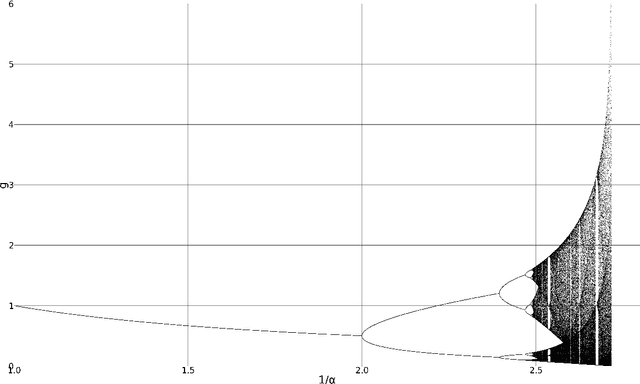
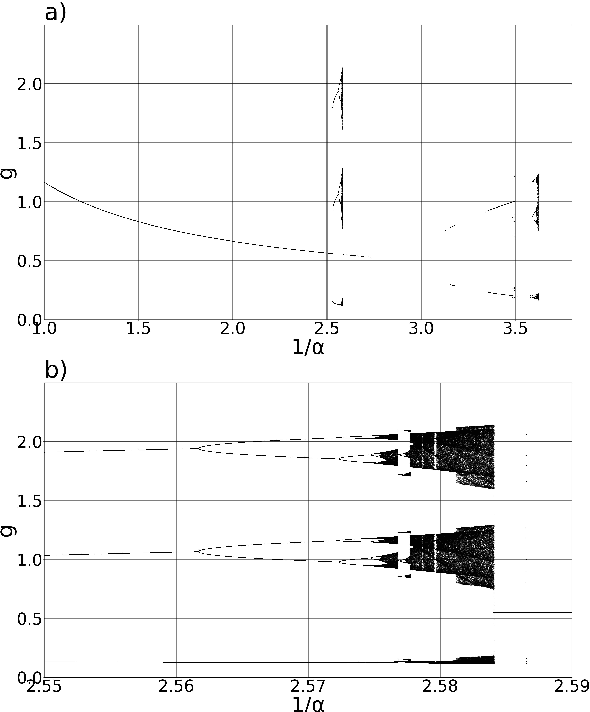

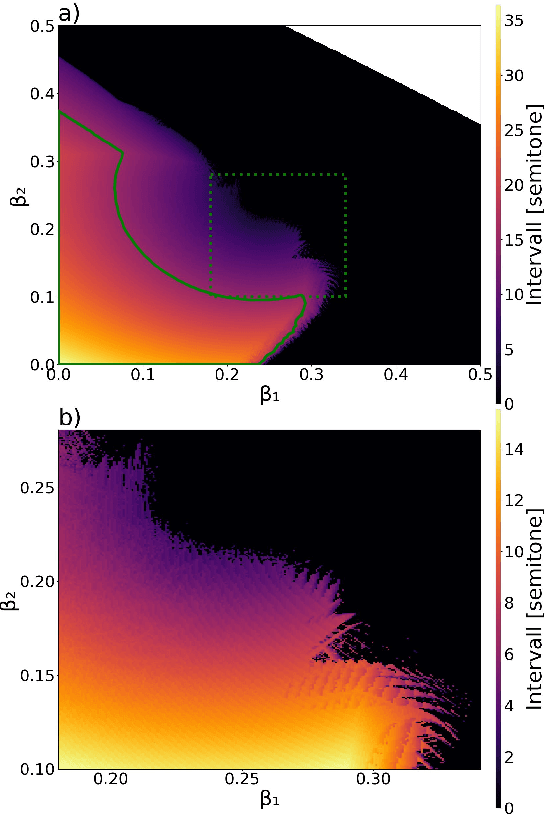
Abstract:Multiphonics, the presence of multiple pitches within the sound, can be produced in several ways. In wind instruments, they can appear at low blowing pressure when complex fingerings are used. Such multiphonics can be modeled by the Impulse Pattern Formulation (IPF). This top-down method regards musical instruments as systems working with impulses originating from a generating entity, travel through the instrument, are reflected at various positions, and are exponentially damped. Eventually, impulses return to the generating entity and retrigger or interact with subsequent impulses. Due to this straightforward approach, the IPF can explain fundamental principles of complex dynamic systems. While modeling wind instruments played with blowing pressures at the threshold of tone onset, the IPF captures transitions between regular periodicity at nominal pitch, bifurcations, and noise. This corresponds to behavior found in wind instruments where multiphonics appear at the transition between noise and regular musical note regimes. Using the IPF, complex fingerings correspond to multiple reflection points at open finger holes with different reflection strengths. Multiphonics can be modeled if reflection points farther away show higher reflection strength and thus, disrupt periodic motion. The IPF can also synthesize multiphonic sounds by concatenating typical wind instrument waveforms at adjacent impulse time points.
Modeling synchronization in human musical rhythms using Impulse Pattern Formulation (IPF)
Dec 06, 2021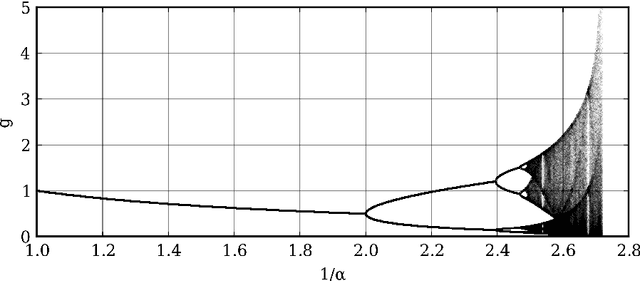
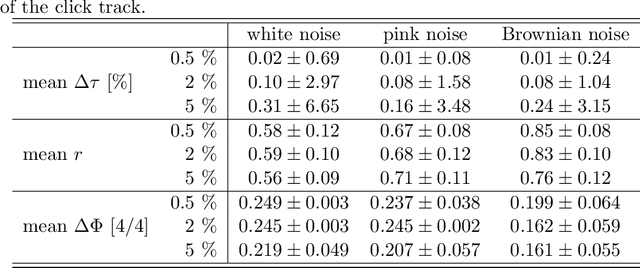

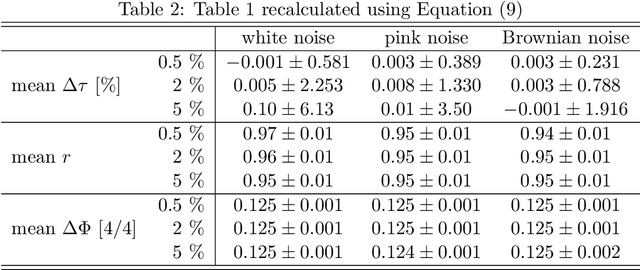
Abstract:When musicians perform in an ensemble, synchronizing to a mutual pace is the foundation of their musical interaction. Clock generators, e.g., metronomes, or drum machines, might assist such synchronization, but these means, in general, will also distort this natural, self-organized, inter-human synchronization process. In this work, the synchronization of musicians to an external rhythm is modeled using the Impulse Pattern Formulation (IPF), an analytical modeling approach for synergetic systems motivated by research on musical instruments. Nonlinear coupling of system components is described as the interaction of individually propagating and exponentially damped impulse trains. The derived model is systematically examined by analyzing its behavior when coupled to numerical designed and carefully controlled rhythmical beat sequences. The results are evaluated by comparison in the light of other publications on tapping. Finally, the IPF model can be applied to analyze the personal rhythmical signature of specific musicians or to replace drum machines and click tracks with more musical and creative solutions.
 Add to Chrome
Add to Chrome Add to Firefox
Add to Firefox Add to Edge
Add to Edge